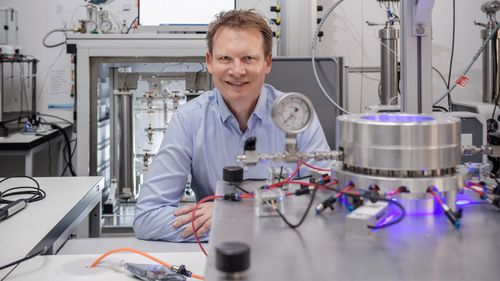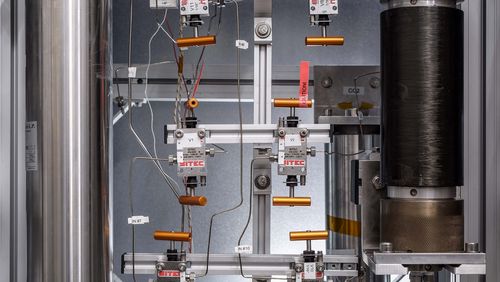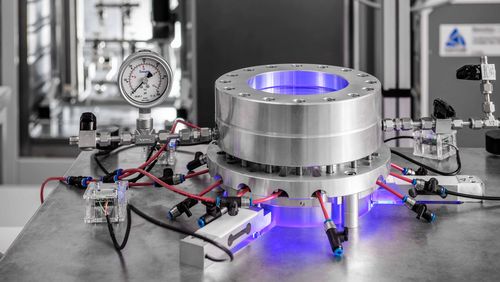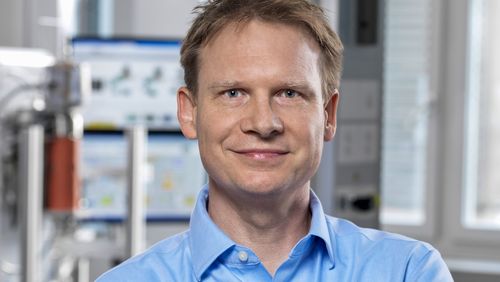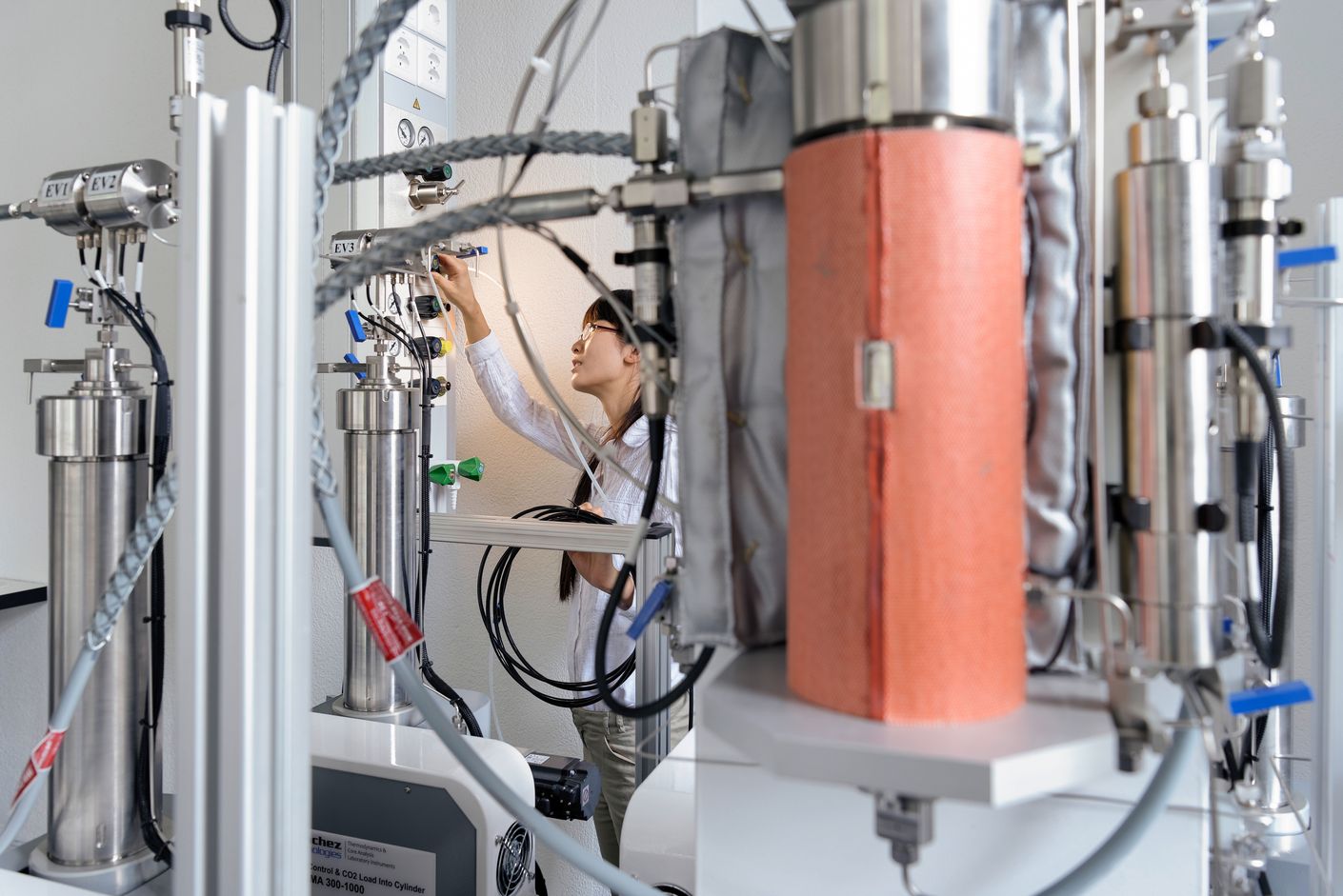
Tapping into the fireball
The intense heat in the interior of the Earth is one of the planet’s least-used energy reserves. Professor Martin O. Saar and his team at ETH Zurich are exploring ways to harness this energy and generate electricity on a large scale—with funding from the Werner Siemens-Foundation. The innovative technology has the potential to generate large amounts of electricity while also reducing carbon emissions.
“We’re living on a planet that has enough energy for humanity until the end of time,” says Martin O. Saar, professor of geothermal energy at ETH Zurich. Only the first two to three kilometres of the outer crust of the Earth is ever below 100° Celsius. The vast majority—namely 99% of the entire globe—is hotter than 1000° Celsius. And the Earth’s core burns at over 4000° Celsius, making it hotter even than the surface of the sun.
Tapping into this inexhaustible source of energy to meet the world’s energy needs is the goal Martin O. Saar has set himself. Two years ago, he gave up his professorial chair at the University of Minnesota to build a new research group at ETH Zurich and explore geothermal energy and geofluids—with funding from the Werner Siemens-Foundation.
No cooling in sight
It’s hard to grasp that systematically extracting warmth from a body won't cause it to cool down. “But the Earth produces its warmth in the cold universe,” Saar explains. “This happens continuously in the interior via radioactive decay.” Another little-known fact is that the liquids in the Earth’s core are permanently crystallising. “Through this crystallisation process, the inner, solid core of the Earth is formed, and this too releases heat.”
But how to harness this energy? The idea is to drill about three kilometres below the surface of the Earth in order to either retrieve hot water from the depths or to inject water for the purpose of heating it. The heat is used to generate electricity in a steam turbine, and the cold water is then pumped back into the earth. Although it unfortunately isn’t quite as easy as it sounds.
In order to pump the water to the surface, it has to be able to flow through layers of rock. If the rocks are naturally porous, as in seismic zones, this is a fairly straightforward undertaking. But water so far below the surface is generally much brinier than seawater, and when it's pumped up, it cools off and deposits minerals that clog the pathways over time. Which is why geothermal researchers have a penchant for earthquakes: in active seismic areas, there is so much movement in the subsurface that water always finds a path to flow through. In Nevada or California in the US, for example, the power plants are built intentionally in seismic zones where there are enough earthquakes to keep the pathways to the substrata open. Without these conditions, operating the power plants over a period of decades would be impossible.
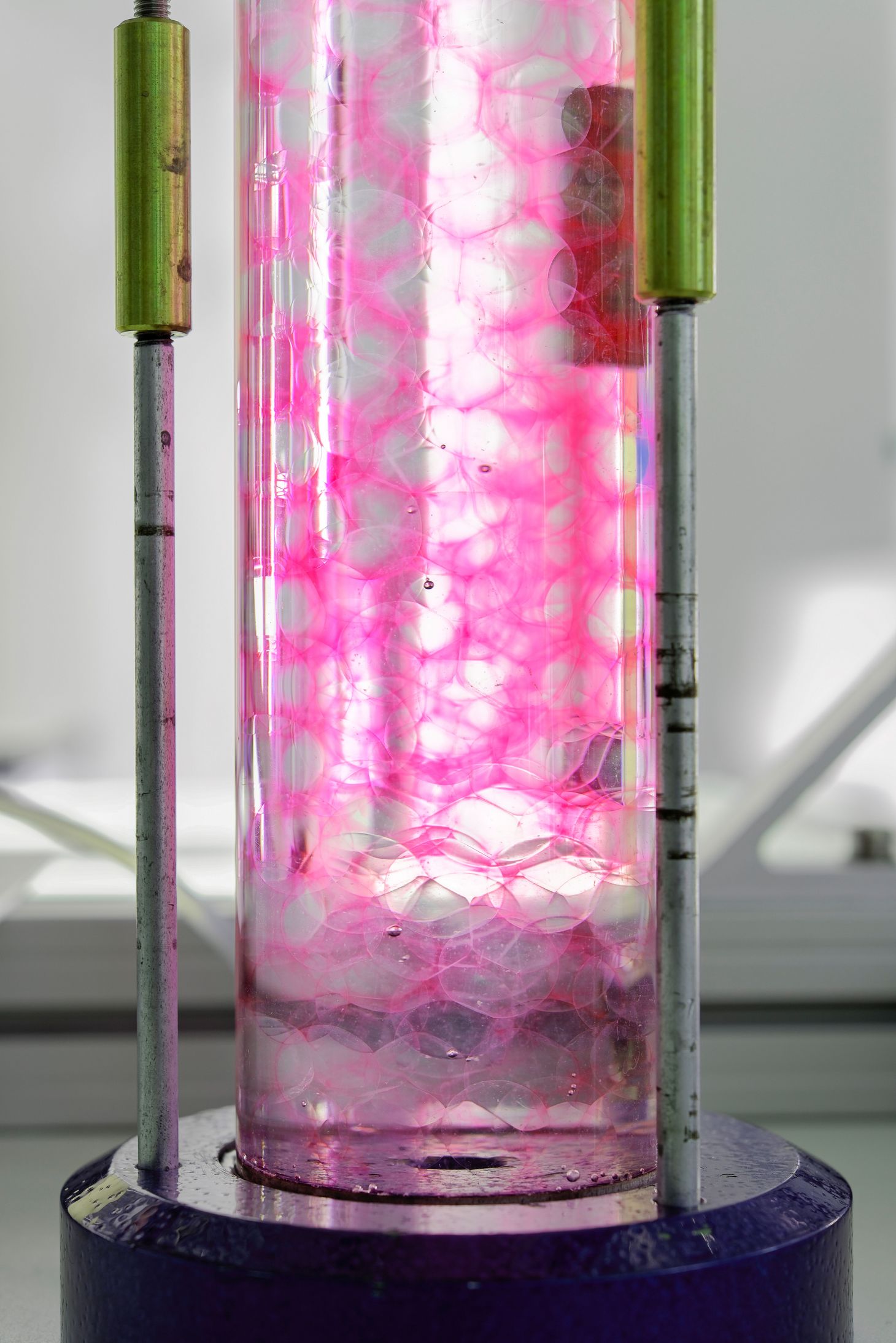
Earthquakes as positive energy
Although the average layperson will associate earthquakes with destruction, researchers see a useful, creative force: “Without earthquakes, we’d have no mountains or rivers. And no access to geothermal energy.” And where earthquakes aren’t a natural phenomenon, researchers become explosives specialists—although they use water, not dynamite. Using high-pressure pumps, they inject water into the rock, thus “stimulating” it into shifting. The art lies in the dosage: instead of causing a large earthquake, the idea is to trigger numerous micro-quakes that are monitored to the last detail.
The method was put to the test on the hard granite of Switzerland’s Grimsel massif. In a pre-existing tunnel, the research team joined forces with the “Swiss Competence Center for Energy Research—Supply of Electricity” to conduct their meticulously planned experiments. They monitored the rock layers from every possible angle, lowering sensor after sensor into deep holes in order to map a 3D image of the movements. To complete the study, they hermetically sealed two boreholes section by section and injected water to trigger tremors in the granite. The procedure made the entire layer of rock porous, without causing larger tremors.
Currently, immense datasets are being interpreted. “The more we know, the better we can predict what will happen,” says Martin O. Saar. “We’re confident that we’ll be able to steer the magnitude of our quakes better in future.”
High-cost drilling
There is, however, another problem preoccupying researchers. Often, it's necessary to drill as deeply as five to six kilometres before reaching an economically viable temperature of 180° Celsius. And drilling is the most costly part of harnessing geothermal energy. A breakthrough idea for lowering costs came to Saar ten years ago while on a road trip with a PhD student in the US. At the time, the PhD student was working on simulations of underground carbon reservoirs for the Minnesota Geological Survey. During their discussions, the two researchers hit upon the unorthodox idea of using liquid carbon dioxide to transport heat to the Earth’s surface.

Carbon dioxide as a heat conductor
The spontaneous idea proved to be a serious option. Saar’s enthusiasm is apparent: “We quickly realised that we can transport heat to the surface better with carbon dioxide than with water.” What gives carbon dioxide the advantage? “CO2becomes beautifully supercritical at a depth of just one kilometre,” Saar explains. Meaning that carbon dioxide achieves an aggregate state between a fluid and a gas, allowing it to flow better than water and to expand significantly more when heated. It’s also highly buoyant—and thus rises easily to the surface. Another great advantage is that accessing geothermal energy via CO2no longer requires earthquakes because the nearly gaseous carbon dioxide simply flows through certain rock layers.
Slowing climate change
In the meantime, research on combining underground CO2reservoirs and harnessing carbon dioxide for geothermal energy is being conducted worldwide. That it took so long to come upon this idea is most certainly related to the negative associations attached to carbon dioxide. After all, it's the key cause of global warming and useful applications are therefore generally not even considered. In the US, underground reservoirs have been used to improve the country’s carbon footprint for some time, although this aspect hasn’t yet entered the political debate in Switzerland. Nevertheless, the Swiss Federal Office of Energy and several companies plan to explore the technology. The prospects are indeed highly promising: should it become possible to extract carbon dioxide from the Earth’s atmosphere, store it underground and use some of the stored carbon dioxide to transport geothermal energy to the surface and generate power—we would be capable of slowing climate change.
Text: Sabine Witt
Photos: Felix Wey



